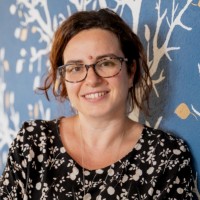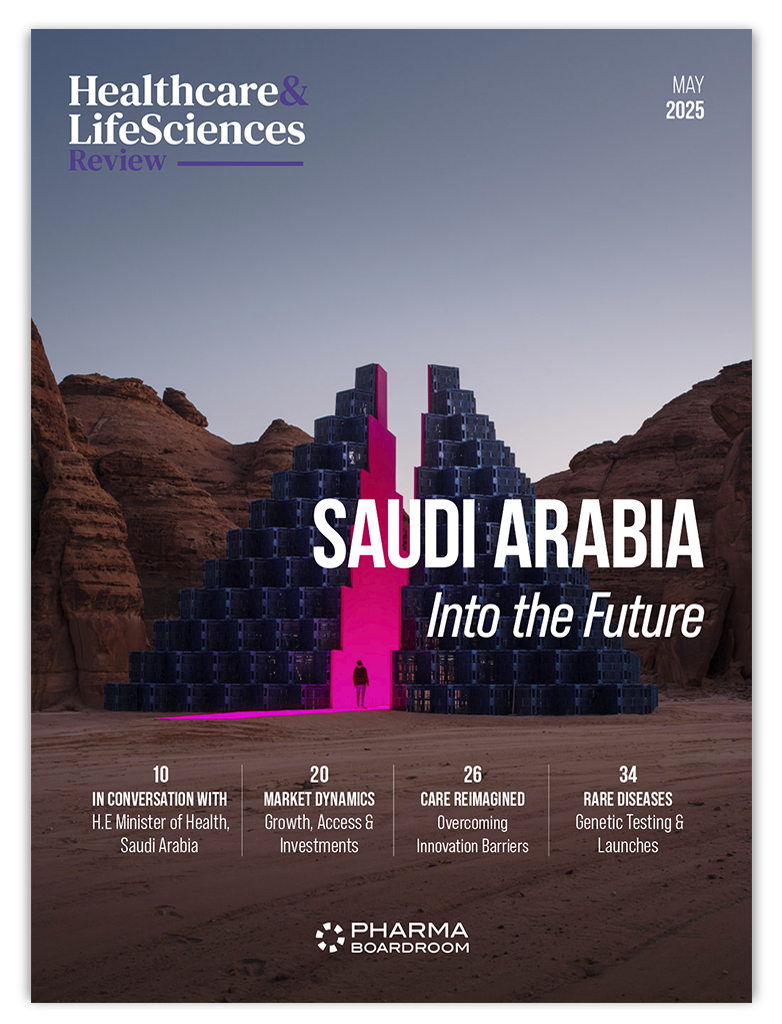Daniela Marino, CEO and co-founder of CUTISS, leads a pioneering Swiss “tech-bio” company developing personalised skin grafts through advanced tissue engineering. With roots in academic research and over EUR 90 million raised, CUTISS has brought its lead product into Phase III trials, targeting burns and reconstructive surgery. Their unique approach combines autologous regenerative medicine with proprietary manufacturing technology, aiming to make scalable, clinically effective skin tissue therapy widely accessible.
Could you share a bit about your background and the journey that led you from academic research to founding and leading a pioneering tech-bio company?
I come from Sicily, in southern Italy, and left home at 18 to study biotechnology in Milan. From the beginning, I was fascinated by the field – my master’s thesis explored the interface between neuronal stem cells and microchips to control robotic limbs. After that, I pursued a PhD in stem cells and embryology at ETH Zurich. Although my early interests leaned toward neuroscience, my supervisor, who was a dermatologist, persistently redirected my focus to skin. Over time, I came to appreciate it not only as the body’s largest organ but as something deeply tied to identity.
After completing my PhD, I remained in academia and joined the Tissue Biology Research Unit at the University Children’s Hospital in Zurich. That marked a turning point from pure science to applied, translational work. In 2011, we secured a EUR five million EU grant to develop and clinically test what is now our skin replacement product – denovoSkin™. While I wasn’t the original inventor, I was instrumental in bringing it from the lab to the clinic. We trialled the graft on children, and the visible results were profoundly encouraging.
However, when the grant ended, we faced a gap with no public funding for Phase II or III trials. I began pitching the idea through business competitions, supported by Innosuisse and others. In 2015, we won the best business plan competition at Venture.ch. Despite facing doubts – as a foreigner, a mother, and someone not fluent in German – I committed to doing things properly. In 2016, we joined the Wyss Zurich accelerator, received our first funding, hired a team, and built our lab. We incorporated the company in 2017.
Since then, the journey has been remarkable: over EUR 90 million raised, a team of more than 50 people, and our lead product in Phase III trials. It has been a challenging road, but immensely fulfilling. I believe my blend of scientific rigour, willingness to take risks, and perhaps a touch of naïveté gave me the conviction to believe we could succeed, and so far, we have.
Tell us about CUTISS…
We operate within advanced therapy, specifically in the emerging area of autologous tissue engineering. There is no textbook roadmap; we are among the first to build one.
We started by establishing independent manufacturing capabilities. Academic facilities lack the scale required for late-stage clinical and commercial operations. We assembled a team, rented space, and began optimising our processes.
Next, we addressed the scale-up of production challenge. Skin surgery needs large-scale tissues, and we worked with partners like Zühlke and CSEM to design, prototype and test custom-built automated systems.
Clinical batch manufacturing was the next step. Our lab at Wyss Zurich would not have been able to support the scale of a large phase 3 trial so we raised capital to build our own GMP-compliant facility. In 2022, we completed the transition, achieving full independence from academic infrastructure.
That marked a shift to a company preparing for commercialisation. The focus now is on market readiness. Interestingly, investors often remark that our pitch has remained consistent for eight years – we’ve always had a clear direction, vision and mission.
Despite external challenges such as COVID-19, geopolitical instability and supply chain disruptions, we have maintained our course. European biotech often accomplishes more with fewer resources. For comparison, US peer companies have raised hundreds of millions; we have achieved significant milestones with EUR 90 million.
How does CUTISS’s approach to tissue engineering differ from others in the field?
Regenerative medicine is often discussed but rarely well understood. While we cannot regrow limbs like some organisms do, we can identify and replicate the conditions that enable tissue regeneration.
Our approach is autologous – we extract stem cells from the patient’s skin and bioengineer skin tissue in the lab. This tissue is then regrafted to regenerate for patients.
CUTISS is not traditional Pharma, BioTech or MedTech. It is regenerative medicine in its purest form. Moving beyond healing and scarring, toward true restoration of structure and function in an accessible way.
For burn and reconstructive skin surgery, the use of the patient’s own cells is critical. Donor tissue would provoke rejection. Allogeneic tissues may be a solution for other applications, e.g. chronic wounds.
Skin remains our core focus due to its complexity and surface area. Yet the automated systems we have developed are designed to be adaptable.
Moving forward, we envisage applying the same platform to other tissues such as corneas, gums or muscle. The vision is modular, industrialised tissue production. Imagine a system where inserting a specific cartridge yields tissue on demand.
Skin is among the most demanding tissues to manufacture. Once we have mastered that, smaller-scale applications become significantly more feasible. At that point, industrial partners may become key collaborators. We are entering a new era: not biotech, but “tech-bio” – where engineering truly meets biology.
CUTISS is now in the middle of Phase III trials. How did you get to this point?
Our first action was to engage directly with Swissmedic, as our initial Phase I trial was conducted exclusively in Switzerland. The agency has been highly collaborative, accessible, knowledgeable, and well-acquainted with our work.
We then expanded into Europe and began working with the European Medicines Agency (EMA). The Netherlands was a natural first step, given its prominence in burn care, then Italy.
We also applied for orphan drug designation (ODD) from Swissmedic, the EMA, and the FDA. That proved to be a strategic win. As a Swiss SME with ODD status, we were able to engage frequently with regulators, benefit from incentives, and maintain an open dialogue.
During Phase II, we split our development into two indications: burns and reconstruction. This was done in consultation with regulators, who supported the approach. The orphan designation enabled acceleration for burns, while the reconstruction trials broadened our data.
Some critics thought we were taking on too much. We were told that running three trials was unrealistic, especially with paediatric subgroups. We took up the challenge and did it. To date, nearly 70 patients across multiple indications have been treated. That breadth of evidence is crucial as regulators are no longer satisfied with narrow datasets.
Phase III, which focused on burns for now, is underway. Approval was granted in December, and the first patient was enrolled that month. We are currently active in 21 centres across nine European countries. Recruitment is the key focus. Recruitment for burns is inherently challenging as it is event-driven. Multiple centres are essential to maintain momentum. We are aiming for a first data set readout by the end of next year.
The next steps depend on capital: if we raise sufficient funds, we will progress with reconstruction in parallel.
Your capital-raising journey has been extensive. What has that experience been like?
Fundraising in a novel field brings both interest and hesitation. Our seed round was led by the University of Zurich Life Science Fund, a joint venture of Novartis Venture Fund and the University of Zurich Foundation.
Early conversations with VCs were often contradictory. Some said we were too early, others that we were too late. Some saw us as BioTech, others as MedTech.
Ultimately, we turned to the Swiss ecosystem – angels and family offices who saw the disruptive vision and the societal impact. Our early data made the proposition tangible, even for non-specialists. That Series A raised EUR 11 million to begin Phase II trials.
Our Series B launched in 2020, two weeks before the pandemic. We raised EUR 45 million in tranches to build our GMP facility, complete Phase II and advance our automation program.
Series C opened in 2024, following strong Phase II efficacy and safety results. An unfavourable macroeconomic environment did not stop us in securing CHF 25 million, which allowed us to submit the application for Phase III and get it rolling.
A key concern among investors was our ability to take our proprietary automation scale-up program to the industrial stage and clinical readiness. We recently announced a partnership with Tecan, exactly to enable industrial scaling of the automation of skin production. All the pieces of the puzzle are now in place. We are now raising the second tranche of Series C to reach our next milestones and succeed.
CUTISS’ scientific team appears incredibly strong. How did you go about building the necessary expertise?
We began with me as CEO and another co-founder, Dr. Fabienne Hartmann-Fritsch, as Chief Clinical Officer, who is nowadays an advisor to CUTISS.
Right after, the first priority was R&D leadership. I asked trusted peers who could take this concept and industrialise it. One name emerged repeatedly – Dr. Vincent Ronfard, an expert based in Singapore at the time. Vincent joined basically as a second-round founder and has been instrumental ever since.
Next was ensuring GMP operations. Again, I asked widely, and another strong recommendation emerged. Kathi Mujynya joined as COO in 2019, and the facility and the teams were operational by 2020 with incredible speed and operational excellence.
If I have a particular strength, it is bringing people together. My daily focus now is on investors and vision. The team runs day-to-day operations seamlessly.
Today, the executive team is highly committed, experienced, and aligned.
Reflecting on your entrepreneurial journey, would you choose Switzerland again as the base for building up CUTISS?
Without hesitation. Switzerland offers an unparalleled combination of academic excellence, infrastructure, regulatory clarity, and talent pool.
Seventeen nationalities are represented in our company. Most did not require international recruitment – they were already here. Switzerland retains talent, and that continuity has been vital to our success.
If you could offer your younger self one piece of advice, what would it be?
Do not take setbacks personally, and do not let discouragement take hold when things seem bleak. The journey will have highs and lows, but resilience is everything.
If you are clear about where you want to go, you may not get there in a straight line, but you will get there. That clarity of purpose is essential.
Everyone needs to find their own way to stay grounded. I have found that maintaining mental resilience over the years requires real effort. So I would tell my younger self: breathe. Take things one step at a time. There is no moment when you can simply relax. This journey is a constant evolution. But that is also what makes it worthwhile.
And keep it joyful. I work incredibly hard, but I love what I do. My children see that – they see the commitment, but they also see the joy. It is important to hold on to excitement. I feel very fortunate to be building something I genuinely believe in.
As a final message, why should industry leaders be paying close attention to CUTISS at this stage?
Because we are bringing true regenerative medicine and tissue therapy into a scalable, clinical reality. Many brilliant projects have shown promise, but very few have progressed to tangible, accessible products.
Our aim is not just to demonstrate scientific excellence, but to deliver lasting impact. That means having both robust clinical data and a product that can be manufactured, distributed, and used at scale.
Regenerative medicine should not remain in the realm of theory or boutique trials. We want to be the team that proves science can be translated into real-world solutions that change patients’ lives. We started with skin, but the platform can go much further.


